#Meditation Buddha fine painting
Explore tagged Tumblr posts
Text
Finding Peace: The Beauty of Meditation Buddha Fine Art
Discover inner peace with "Finding Peace: The Beauty of Meditation Buddha Fine Art." This infographic by Visual Sketches highlights the historical significance, spiritual symbolism, and aesthetic beauty of Meditation Buddha art. Explore how these artworks enhance meditation and create serene spaces.
Visit this Infographic:
#Finding Peace: The Beauty of Meditation Buddha Fine Art#Meditation Buddha Fine Art#Meditation Buddha art#Meditation Buddha painting#Meditation Buddha art painting#Meditation Buddha fine painting#Buddha art#Buddha art painting#Buddha painting
0 notes
Text
Ajanta and Ellora Caves: A Gateway to Ancient India
The Ajanta and Ellora caves are more than just historical landmarks—they are gateways into the heart of ancient India. For worldwide travelers, these UNESCO World Heritage sites offer an unparalleled journey into the artistic, religious, and cultural brilliance of India’s past. Whether you're an art lover, history enthusiast, or simply an explorer, the beauty and intricacy of these caves leave every visitor spellbound. Opting for Ajanta Ellora tour packages makes the experience even more fulfilling, providing the opportunity to dive deep into the rich heritage these caves represent.

Ajanta Caves: A Treasure of Buddhist Art and Architecture
The Ajanta Caves, dating back as far as the 2nd century BCE, are one of India’s most important contributions to Buddhist art. Nestled along a horseshoe-shaped gorge, these caves are known for their detailed rock-cut architecture and vivid murals. The caves were once used by Buddhist monks as monasteries and meditation halls, reflecting the spiritual and artistic essence of ancient India.
Inside the caves, visitors can witness the detailed frescoes and sculptures that depict scenes from Buddha’s life. These murals illustrate not just religious teachings but also stories from the Jataka tales, which tell of Buddha’s previous lives. The use of vibrant colors and the artistic precision in the paintings make Ajanta a global treasure.
Travelers on Ajanta and Ellora tour packages often visit key caves such as Cave 1 and Cave 26. Each cave offers something unique, from the peaceful gaze of Bodhisattva Padmapani to the reclining Buddha, capturing his moment of nirvana. The stories depicted in these murals aren’t just artistic—they carry deep philosophical meanings that have resonated for centuries.
Key Caves to Visit at Ajanta
Cave 1: Known for its beautiful mural of Bodhisattva Padmapani, this cave captures the height of Buddhist art.
Cave 2: The vibrant murals in this cave tell stories from the Jataka tales with impressive color and detail.
Cave 26: A highlight for many visitors, this cave features a large reclining Buddha, symbolizing his path to nirvana.
Ellora Caves: A Blend of Religions and Architectural Marvels
The Ellora Caves are unique because they represent three major religions—Buddhism, Hinduism, and Jainism—all coexisting in one place. Carved between the 6th and 10th centuries, these 34 caves showcase India’s religious tolerance and artistic diversity. Unlike Ajanta, which focuses on Buddhist themes, Ellora is home to temples and monasteries that reflect the spiritual practices of multiple faiths.
The most famous attraction at Ellora is the Kailasa Temple (Cave 16). This enormous rock-cut temple was carved from a single stone and dedicated to Lord Shiva. The intricate carvings, towering columns, and elaborate sculptures inside the temple are nothing short of awe-inspiring. It is one of the most impressive architectural feats of ancient India.
In addition to the Hindu temples, Ellora houses several Buddhist viharas and Jain shrines. The Buddhist caves include viharas (monasteries), and one of the most notable caves is Cave 10, known as the Carpenter’s Cave. The Jain caves, especially Cave 32 (Indra Sabha), showcase delicate carvings and minimalist designs, reflecting the Jain philosophy of non-attachment. Ajanta and Ellora tour packages provide visitors the opportunity to appreciate this blend of artistic styles while learning about the spiritual history behind each site.
Must-See Temples and Caves in Ellora
Kailasa Temple (Cave 16): A masterpiece of rock-cut architecture, this temple dedicated to Lord Shiva is the crown jewel of Ellora.
Cave 10 (Vishvakarma): Also known as the Carpenter’s Cave, this Buddhist cave features a striking stupa and a large seated Buddha.
Cave 32 (Indra Sabha): A Jain cave that showcases fine carvings and serene sculptures, representing the simple beauty of Jain art.
The Cultural and Historical Impact of Ajanta and Ellora
Ajanta and Ellora are more than just magnificent works of art—they are windows into India’s ancient history. These caves served as centers of religious learning and cultural exchange, where monks and artisans created masterpieces that transcended time. The frescoes at Ajanta not only highlight the influence of Buddhism on Indian art but also offer glimpses into daily life, trade, and social customs of ancient times.
Ellora’s blend of religious shrines, on the other hand, reflects India’s cultural and religious tolerance. Buddhist, Hindu, and Jain structures stand side by side, emphasizing the harmonious coexistence of different faiths. The Kailasa Temple alone is a marvel of engineering and dedication, showcasing India’s architectural brilliance.
Recognized as UNESCO World Heritage sites, Ajanta and Ellora have become globally recognized for their cultural significance. Travelers from around the world visit these caves to rediscover a lost era of creativity, spirituality, and artistic excellence. Choosing Ajanta Ellora tour packages ensures that visitors don’t just admire the beauty but also gain a deeper understanding of India’s rich cultural history.
Why Ajanta and Ellora Attract Worldwide Travelers
Worldwide travelers flock to Ajanta and Ellora for several reasons. Their historical significance, spiritual depth, and artistic brilliance make them must-visit destinations. These caves offer travelers an immersive experience in ancient Indian culture, allowing them to witness the skill and devotion of artisans who lived over a thousand years ago.
For history lovers, the caves are like walking through a living museum. For art enthusiasts, they are a gallery of ancient Indian masterpieces. For spiritual seekers, they offer a place of reflection and inspiration. Ajanta Ellora tour packages cater to all these interests, providing visitors with guided tours, cultural insights, and plenty of time to explore the rich heritage of these ancient wonders.
Practical Tips for Visiting Ajanta and Ellora’s Historic Wonders
If you’re planning a visit to Ajanta and Ellora, it’s important to prepare. The best time to visit is between October and March when the weather is cooler and more comfortable for sightseeing. Both cave complexes are located near Aurangabad, a well-connected city with flights, trains, and buses available from major Indian cities. Many Ajanta and Ellora tour packages include transportation, accommodations, and guided tours, making the travel experience hassle-free.
Wear comfortable shoes as you’ll be walking through many caves and climbing steps. Don’t forget your camera—Ajanta and Ellora offer countless photography opportunities, from the intricate details of frescoes to the grand scale of temples. Hiring a guide is highly recommended as it enhances your understanding of the art, history, and spiritual significance of the caves.
Ajanta and Ellora as a Photographer’s Dream
Photographers will find Ajanta and Ellora a treasure trove of unique shots. The intricate carvings, colorful frescoes, and grand temple structures offer endless opportunities for stunning photographs. Ajanta’s murals, with their fine brushwork and vibrant hues, are perfect for close-up shots, while Ellora’s Kailasa Temple can be captured in all its architectural grandeur through wide-angle lenses.
Early morning and late afternoon provide the best natural light for photography, especially when capturing the delicate carvings and sculptures. Ajanta Ellora tour packages often include photography tips and access to key locations within the caves, ensuring travelers capture the best of these magnificent sites.
Preserving the Legacy: Responsible Tourism and Conservation Efforts
Ajanta and Ellora have stood the test of time, but they need continued protection. Conservation efforts are ongoing, and it’s important for travelers to practice responsible tourism when visiting these sites. Avoid touching the frescoes and carvings, as this can cause damage over time. Flash photography is prohibited in many areas to protect the ancient murals.
By choosing Ajanta Ellora tour packages, visitors can contribute to preserving these sites while gaining a deeper appreciation for their historical and cultural significance. Many tours emphasize responsible tourism, ensuring that future generations can continue to admire the timeless charm of Ajanta and Ellora.
0 notes
Text
Discovering Tranquility: Exploring the Buddha Tooth Relic Temple and Museum
Singapore, a thriving metropolis with a remarkable heritage – and proven to be also the Buddha Tooth Relic Temple and Museum – is an impressive cultural landmark. This spectacular building, which is located in the heart of Chinatown, is more than just a temple. It embodies history, spirituality, and a deeply authentic experience. Visitors from all over the world, come to observe the peaceful and beautiful space it provides.

A Glimpse into History
The Sanbanjiao Relic Temple and Museum is an architecture that displays our country’s Buddhist heritage overall. Constructed in 2007, this exquisite temple is an artistic blend of the traditional Tang dynasty architecture, and modern artistry techniques, offering the viewers a feast for the senses with its richly detailed designs and configurations.
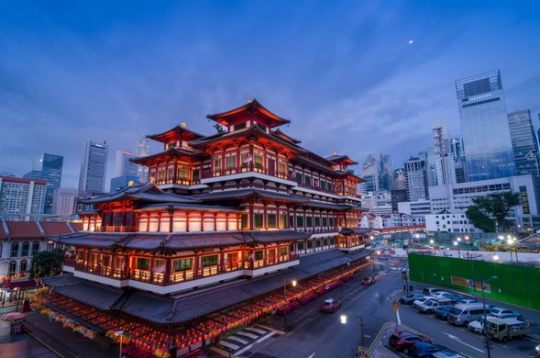
The Sacred Relic
This jewel is the core element of the vintage. This venerated sacred object which many believe to be a genuine toothpaste of Gautama Buddha, founder of Buddhism is placed in a stupa on the fourth floor of the temple. In this place devotees and wondering wizards come to pay homage and seek blessings, and as a result, there is an air of piety that exhales a muffin of spirituality.
Architectural Marvels
Such a step into the temple welcomes you to the divinity you will behold. Finely sculpted columns, rich wall paintings detailing Buddhist teachings, and a peaceful courtyard ornamented with lotus pools that are surrounded by the sensational force are imbued with a sense of tranquility. The central hall is lavishly adorned with golden Buddha statues and an impressive altar and it appeals to the people’s faith and tranquility.
Exploring the Museum
It is only next to the temple that the Buddha Tooth Relic Museum is found which serves as a perfect place to explore Buddhist art, culture, and history through a display of various exhibits. From the very first manuscripts and statues in reproduction with the life of an impression of Gautama Buddha to artifacts that highlight the way of life of the Buddhists in their community, the museum will take you through a magnificent journey that will weave across time and the established tradition.
Cultural Experiences
One can either go for a walk or run around the temple and integrate with different cultural experiences there or just hang around quietly within the temple grounds. Join in the chant sessions directed by monks or as they meditate. This may give you a sample of how Buddhism. One of the best things about traveling in the Kamchatka territory is getting an opportunity to take part in very expressive and cheerful local celebrations and ceremonies that are important to the native people.
Embracing Tranquility
However, the Buddha Tooth Relic Temple and Museum is not only a mixture of its historical and cultural significance, but is a pure sacred place of peacefulness and serenity. The calm atmosphere complemented by the aroma of fired incense and amiable recitations is the perfect sanctuary for one’s inner reflections and self-understanding.
Plan Your Visit
Singapore should be on your travel list if you are thinking about ways to spend your vacations. Take some time to look around the Buddha Tooth Relic Temple and Museum. Located in a single location by Chinatown, it’s easily accessible by public transport or just simply a relaxed stroll along bright streets. Also, it is always advisable to be dressed properly and demonstratively in these circumstances, since this is a place of worship and reverence.
Plan Your Visit with Trip Cabinet’s Singapore Tour Package from Visakhapatnam
If you are thinking of visiting Singapore from Vishakapatnam, a trip to the Buddha Tooth Relic Temple and its Museum would be a must on your list. Situated in Chinatown and reachable easily taking public transport or leisurely walking through these beautiful streets. Spice up your Singapore tour package from Visakhapatnam with Trip Cabinet, which offers curated experiences that include visiting this famous temple and many other exciting things to do under the sun in Sunny Singapore. Recognize that this is the holy place, so dress modestly and show respect. This is where the master lived and it is considered a sacred space
Conclusion
The Buddha Tooth Relic temple and museum occupies a prominent position among the country’s symbols paying homage to Singaporean multi-cultural nature and religious legacy. Be it a serious devotee of Buddhism or an unplanned tourist looking for a quiet moment, this site yields awaking appeals to the inner self and guarantees an experience that will be inscribed on the soul.
Straddle a journey of exploration enlightenment as well at Buddha Tooth Relic where history, spirituality, and peace combine all perfectly.
#BuddhaToothRelicTemple#SingaporeHeritage#ChinatownSingapore#BuddhistCulture#SpiritualJourney#TempleExploration#CulturalExperience#SingaporeLandmarks
0 notes
Text
Sagarika Kanukollu, Dadra and Nagar Haveli
Catalogue for Art Expo-Amritsar Summer 2023
(15 june - 30 aug) | Curated by: Vulcan Art Gallery | 📍Timeless Amritsar,8, Queens'Road, Amritsar

Artist statement
I am Sagarika Kanukollu, a self-taught fine artist with a passion to create art that reflects positivity, divinity and life. I create abstract paintings with vibrant colours and contemporary artwork that is inspired by Indian culture, history and mythology. Each of my creations carries a story of its own, a thought communicated within the colours, patterns and structures. Most of my works are figurative, created using acrylics and oil paints to give the perfect vibrance to living spaces.
-sagarika kanukollu

Bharat
Acrylics on canvas
3 x 3 ft
₹52,000/-
India is known as the land of temples, and this painting is a depiction of the popular Lingaraja temple in Orissa. I added a lush green background and played with the light to give the art piece an ancient vibe.

Ganesh
Acrylics and texture paste on canvas
30 x 40 in
₹45,000/-
Immerse yourself in the tunes as Ganesh plays his Tabla to narrate to the universe. This painting is made with acrylics and texture paste to create layers of background with bright hues depicting light and positivity. Personally, i love portraying Ganesha with musical instruments, showing viewers his passionate side.

Yogini
Acrylics on canvas
4 x 3 ft
₹80,000
This painting is inspired by the connection one feels with Mahadev, and depicts the form of solitude one seeks in the divine presence of Mahadev in the soul. The background takes us back to the mystical forests, with fresh Ganga breathing life into us. Enjoy the details of the water, the trees and the meditative posture of Yogini as she connects with Mahadev.

Nirvana
Acrylics on canvas
3 x 3 ft.
₹40,000/-
Buddha provokes introspection into our materialistic lives. Having a Buddha at your home or workplace brings calm to your senses and ignites careful thought into your life. I love the blend of colours with a meditative form of Buddha, it brings a balance to the idea of freshness and calm.

Natraj
Acrylics on canvas
3 x 4 ft
₹65,000/-
Shiva, the cosmic dancer, is the inspiration for every dance form. This painting is my imagination to what the divine form of Nataraja looks like, and a narrative to showcase how even the greatest dance form like Bharatnatyam begins with his grace.
Support Partners for Art Expo - Amritsar Summer 2023

Anil Stores | Bharawan Da Dhaba | Bon Gateu Cafe | CASA Furnishings | Coffee & Bagels Cafe | IBT Institutes | Pink Peggy Cafe | Rai Language Academy | Tile World | Timeless Asthetics
1 note
·
View note
Text
A surprise for you all~~

Another day of xue yang teaching~~
Xue yang: welcome back!!
Jinling: how do you manage to keep kidnapping us?!
Xue yang: it's a gift.
Xue yang: aww. New students!! Welcome to the best class you'll ever have.
Huaisang I didn't want to be here.
Xue yang: that's the whole point of kidnapping, headshaker!
Mingjue: Xue yang! You told me that Lan xichen was in trouble?!!!! How dare you trick me!
Xichen: *living his best life drinking tea* hii dage!!
Mingjue: he's completely fine.
Xue yang: aren't you happy? That tea could have been poison or alcohol.
Jingyi: alcohol was an option? I want some!
Xue yang: you're too young.
Jiggy. Did you do my homework?
Yao: of course Chengmei. Here are the sweets.
Xue yang: thank you.
Su she and mo xuanyu: *sleeping*
Xue yang: you two are so rude. Time to wake up!!
Xue yang: I'll slap them awake.
Mingjue: nah I got this. Jiggy isn't hot!
Huaisang: yea he isn't! And I stole your makeup.
Su she: *waking up* who invited you and what did you saying about him?
Mo xuanyu: give me back my red paint!! And Yao gege is flawless.
Xue yang: ahahahahahaha. THE SIMPS ARE AWAKE.
Xichen: A-Yao. Can I borrow a pencil?
Yao: sure.
Xue yang: oh, return of the dragon. But the dragon is 4L cultivation.
Su she: so you didn't bring one?! What would Zongzhu use. Selfish Lan.
Xue yang: let Lan lips do his thing.
Mingjue: *cracking up* Lan lips?
Sizhui: oh my goodness.
Jingyi: *laughing* SECT LEADER LAN LIPS!!!! SENIOR LAN LIPS!!
Xue yang: yep that's his name.
Lan xichen: see what you have caused.
Su she: Lan twink.
Xue yang: hahahahaha.
Yao: I think I like Lan lips more *laughing*
Jinling: you guys are so lame! Except for xiao shushu.
Xue yang: oh right! I have to appoint more stereotypes. Ok Huaisang is That B****.
Huaisang: excuse me?! What did you call me?
Nmj: don't let me break your remaining fingers.
Yao: dage, please spare Chengmei.
Xichen: *closing his eyes and meditating*
Xue yang: let me finish. Huaisang is That b**** who knows everyone's business. And hates the hot cheerleader, a.k.a, Jiggy.
Huaisang: why do San ge get to be the hot cheerleader. I want to be the hot cheerleader!
Xue yang: you once were. But got fired. And your dage won't let you.
Mo xuanyu: yang gege you're so good at writing fanfics.
Xue yang: thank you do much! Now I'm writing, 104 Ways To Us A Knife.
But I have always wanted to write an Au, where my friends and enemies are the characters.
Jingyi: that's so messed up!
Su she: who am I in your fanfics?
Xue yang: between a (Jiggy) simp and a nerd. Or a collegue of mine.
Su she: fair enough.
Xue yang: so Huaisang is That b**** and Dage is that hot body builder dude. Who hates the cheerleader but secretly likes him. As for the cheerleader, he's very smart and talented. And that's what the guy, as well as Lan Lips admire.
Mo xuanyu: and what about the dimples?
Xue yang: of course. That's his weapon. It makes Lan lips drunk. It makes him stutter! It once swallowed his heart!
Su she: *disgusted* I feel like he's forcing my Zongzhu, to be honest.
Sizhui: woww. Sorry Mr. Xue, all I know is Wangxian.
Jinling: are they a thing? Xiao shushu are you also a cutsleeve?
Jingyi: wow. I heard that Lianfang zun's dimples are so deep that SENIOR LAN LIPS can stick his finger in it.
Heard it from Huaisang qianbe.
Huaisang: me?! I don't know for sure ok!
Xichen: *meditating* Buddha, please grant me inner peace.
Yao: *facepalms, while laughing* Muffin can we start the class.
Xue yang: shoot! Yea right.
You have all tied me up in your class drama.
Xue yang: you want Huaisang's fan, what do you do?
Huaisang's: why me?!
Xue yang: cuz you're weak.
Su she: I'll grab it and disappear.
Jinling: I don't like fans.
Mo xuanyu: Yao gege would buy me a fan. So I don't need to steal it from Huaisang gege.
Yao: I bought fans for Huaisang. But if I must.
I'll tell him that something is wrong with his currant fan. Then he'll give it to me, hoping that I will fix it or buy him a new one.
Jingyi: I will shout GIMME THAT! Then snatch it.
Mingjue: HUAISANG GIMME YOUR FAN!! OR I'LL BREAK YOUR PAINT BRUSHES!!!!
Huaisang: *hiding behind his fan* take them all dage.
I'm scared.
Xichen: I'll ask politely.
Sizhui: same.
Xue yang: *rubbing his face* oh Lan lips. Why does it always have to be Lan lips. And wangxian's love child.
Xue yang: you all are smart. But not xue yang smart.
Xue yang: I would put him in a choke hold, from behind. Then I'll snatch it along with some of his money. Hehehehhehehe.
Mingjue: what a gremlin.
Huaisang: please don't do that. I have a weak bladder.
Xue yang: oh gosh. I didn't know you were into me. Lol!
Mingjue: he gets scared easily. Xue yang.
Xue yang: medium rare dage! Stop spoiling it for me!
Anyways I'm not into Huaisang.
Maybe Su she is.
Su she: hell no! And he insulted my Zongzhu. *pouts*
Xue yang: aww. It's alright little simp. We all agree that Jiggy is hot.
Mingjue: is this some kind of simp club?
Xue yang: no. Wait. Is it?
Jinling: why is xiao shushu so popular. I know he's a sect leader but.
Jingyi: I think it's because of the money he has underneath his hat.
Sizhui: what if he's kind, Jingyi. Lol.
Yao: why are you all simping in front the juniors. That's inappropriate.
Mo xuanyu: we can ever be appropriate, Yao gege.
Yao: *looking at xue yang eating a piece of candy from off a dirty counter* you're right.
Xue yang: next question!!
Xue yang: who would you stab if I give you a knife?
Yao: my enemies.
Mingjue: right! I agree. But I don't want to agree with Meng Yao.
Xichen: a fierce corpse.
Mo xuanyu: enemies! Like Yao gege.
Jinling: Jingyi.
Jingyi: you won't be able to, if I stab you first!
Su she: xue yang.
Xue yang: I thought we were friends, Shanshan.
Su she: lol I wouldn't, even though you get on my nerves.
And Zongzhu forbids me.
Xue yang: Gosh, he forbids me as well.
Huaisang: San ge.
Yao and others: *turning to face him*
Huaisang: well I don't know. I don't think I would. Have you guys ever saw me with a knife before.
Xue yang: get out of my class. You're suspended.
Su she: and never come back, or else I'll kick you.
Xue yang: do something worst!. Hang him up on a post or something.
Orrrr. Leave him on a roof. I think he's also afraid of heights.
That's why he's afraid of dage, because he's tall.
Mingjue: *death stare*
Xue yang: come fight me dage!
@verycatbluebird it continues😵💫
#jin guangyao#xue yang#juniours#3zun#mdzs#dimpledlianfang#meng yao#the untamed#cql#mdzs donghua#mdzs au#lianfang zun#nie huaisang#nie mingjue
17 notes
·
View notes
Text
15 Facts About Buddhism
the actual Ethical Conduct 6) Right Effort Mental Development 7) Right Mindfulness Mental Advancement 8) Correct Concentration/Meditation Psychological Advancement 8) Buddhist Concepts: By striving towards typically the right issue one lowers selfish motivation, therefore hitting a state connected with pleasure internally that is not influenced by conditional circumstances. Mindfulness in all of the things is a new key ingredient. If one particular is aware of the fact that any touchable point that people desire is impermanent plus ceases to help be "attached" to these things that we cannot continue to keep, then one gets even more on peace. We can certainly not come to be attached to be able to any views considering that most of us will become ardent concerning this and when circumstances modification, each of our view will simply no longer be important or maybe pertinent. 9) Buddhism is not a good self help course: Be careful of those who also call themselves a get good at or maybe try to market you "enlightenment". You will discover a lot of books and focuses outside there which try to be able to use thoughts like enlightenment" that is a thing that basically has to be obtained individually, it can't turn out to be given or tutored around a paint by means of the numbers program that pledges some things. First, the phrase enlightenment is not made use of in one of the texts from Siddhartha Gautama was concerned that people might hurry into this with out being familiar with and this would lead to repeating traditional ceremonies with out understanding, which will direct to dissatisfaction because of the lack of gain from exercise. Do not come to a good understanding of Buddhism carefully or immediately, take your time plus be sure. This can take investigation. Investigate fully, almost any features that you no longer fully grasp until it causes sense. Also, training along with some others and a fine teacher are the top process regarding learning. 10) Buddhism IS REALLY A RELIGION: It disturbs many Buddhists of which some people feel that Yoga is just the viewpoint. Some people feel there has to be a primary book or perhaps one faith based deity to worship to enable a religion to be real. Most modern practitioners regarding Buddhism observe that all foi are filled using mythology and they understand that the majority of deities and mythological materials in Buddhism are analogies for science and character or perhaps our own mental comprise that first man cannot explain. Quite a few practitioners, particularly in Asian countries, continue to believe in often the actual existence of some of these objects and deities. We should keep in mind that early Buddhist theories came from Siddhartha Gautama through India, that was a Vedic Brahman. The idea then traveled around Asian countries to China exactly where this adapted to Confucianism, which relied strongly on Delegación Piety. It then traveled through to Japan, wherever this adapted to Shinto, typically practiced side by way of side with Buddhism within Japan. Zen was created to change to all some other studying. Siddhartha Gautama compared it to "a raft to reach the other side" within a parable he tutored. "The Parable of This Raft inch When talking to his supporters Gautama Buddha said, "When a person come to a riv and the current is way too fast to permit you to swim across and there is zero bridge you might determine in order to build a number. In case after crossing the particular water you would have quite a few alternatives as to what exactly to do with this raft. a) You can tie that to typically the bank to be applied by other people later. b) You could arranged this afloat for someone different to find. c) You could very well say to by yourself, "What a wonderful raft", and then pick it way up and carry it around upon top of your brain to any extent further. Which would always be proper use of the raft? Buddhism is used in nearly all countries around the entire world, however Buddhists make up only about 7% involving the world's religious human population. Only a few current Buddhist sects use an evangelical technique, trying in order to convert everyone surrounding them. Many Buddhists refrain from seeking to propagate their religion to be able to anyone who doesn't look for it. From the Buy of Interbeing: (Vietnamese Yoga buy founded by Thich Nhat Hanh) "... Knowledgeable of this suffering added about when we bill our views on other people, we are committed not to help force other individuals, even each of our young children, by any means in any respect -- such as authority, risk, money, propaganda, or perhaps indoctrination - to take up our own views. We will regard the right of other people to be several and to choose what for you to believe and how for you to decide. We will, nevertheless , help others refuse fanaticism and narrowness through training deeply and engaging around caring dialogue.... "
1 note
·
View note
Text
Nampō Roku, Book 2 (4a): Appendix (the Basic Concept of Kane-wari, and Kane-wari as Jōō Applied it to the Fukuro-dana).

Chanoyu, as a meditative practice, appears to have begun within the tradition of the Amida¹-focused strain of Buddhism (ultimately known, in Japan, as the Ikkō Shū [一向宗]). The idea of kane-wari [曲尺割り]², then, seems to have originated within this tradition as a way to replicate the (presumed) spatial perfection of Amida's Pure Land³ (just as the burning of incense was intended to recreate its perfumed atmosphere, while the arrangement of the rikka [立華] and the display of idealized landscape paintings were intended to suggest the beauty of its vistas⁴).
The space in front of the daisu was divided into six sectors (with the middle four covered by a folding paper mat, known as the shiki-shi [敷き紙]⁵ -- originally a simple device to prevent spilled matcha from soiling the matting, since the temae was performed in the Buddha Hall of the temple).

The left and right edges of the shiki-shi, along with the three inner folds, were projected onto both the mat, and the daisu (according to notations found in Book Five of the Nampō Roku), and the “correct” placement of all of the objects used for chanoyu were decided upon relative to these five virtual lines. The lines, in turn, came to be referred to as the kane [曲尺 or 矩, which means “measurement”]. Originally, as a consequence of the folds of the shiki-shi, the three inner lines were 3-bu wide (and so the space used for the temae extended approximately 5-bu onto the heri on both sides of the utensil mat). Thus, objects could even be placed on the inner half of each heri, if necessary.
Objects used to serve tea (the chaire, the chashaku, and the chawan) were handled upon the shiki-shi, while the objects used to prepare tea (the chasen and chakin) were placed on the left or right sides of the shiki-shi⁶. The koboshi, as a receptacle for waste water, was placed between the host's thigh and the wall, below his knee-line. (The black finely-dashed line in the sketch above, and below, shows the center of the mat, while the lowest blue dashed line indicates the host's knee-line.)
Later, perhaps as part of the increasingly secular and evolving wabi approach to chanoyu⁷, both the uchijiki and the shiki-shi were dispensed with: in consequence of which the three inner kane were reduced to simple lines (thereby bringing the space used as the temae-za wholly within the heri, as shown below).

The next development was the result of the machi-shū involvement with chanoyu as the driving force behind its evolution, and the rise of Jōō [紹鷗; 1502 ~ 1555].
Jōō seems to have been an antique dealer by profession, who early on made a practice of cultivating the acquaintanceship of many of the impoverished scions of the nobility of his day⁹ by participating in several of their favored activities (poetry competitions, and gatherings held for the appreciation of fine incense), thereby gaining access to their mansions -- while also being in a position to indirectly offer them much-needed money in exchange for their useless antiques.
Aware that there was a system of kane-wari which determined the way to arrange the utensils in both the tokonoma and on the daisu, yet unable to avail himself of a direct road to the classical teachings (which would have placed an additional burden on his time, purse -- and reputation¹⁰), Jōō seems to have improvised, creating a system that divided the space between the heri with seven lines¹¹.

While Jōō originally used the daisu (albeit the small version of the shin-daisu that was appropriate to the inaka-ma setting¹²), after creating the ro, he gave the daisu up¹³ in favor of the fukuro-dana¹⁴. Since the original kane were applied to the daisu¹⁵ (as a way to control the placement of utensils on both the ten-ita and the ji-ita) as well as the temae-za in front of it, Jōō carried this idea over to the fukuro-dana. But since the fukuro-dana does not span the width of the mat from heri to heri as the daisu does, rather than projecting the kane from the mat onto the fukuro-dana, Jōō applied the full set of his kane to the fukuro-dana, as shown below, and this remained the system of kane-wari applied to the fukuro-dana even in Rikyū’s day.

The fukuro-dana is shown above on a kyō-ma tatami, and oriented in the center of the utensil mat (as Rikyū was doing it at the time of this chakai).
_________________________
¹The Buddha-form Amitābha (Amida [阿彌陀] -- a conventional shortened form of the designation Amida Nyorai [阿彌陀], or Amida Butsu [阿彌陀]) functions as a sort of savior or messianic figure in Buddhist mythology.

In the Mahayana tradition, Amida brings the souls of those who call upon him to his Paradise (jōdo [浄土], usually translated as the Pure Land; in Sanskrit, however, it is known as Sukhāvatī, “possessing happiness”), where they await and prepare for the opportunity to ultimately be reborn as Buddhas.
²Kane-wari [曲尺割り].
This kanji rendering, while the most commonly seen, should probably be taken as something akin to a hentai-gana (that is, as a phonetic) rendering* for the more accurate kane-wari [矩割り]: where kane [矩] means a carpenter's square (a measuring device), and, by extension, the measurements† -- and wari [割り] means “a division,” and also “assigning [things] to [specific or appropriate] divisions.”
In the Nampō Roku, kane-wari is usually written phonetically, with katakana (as kane-wari [カネワリ]). __________ *Technically speaking, the kanji in this compound should be pronounced kane-jaku [曲尺], and it means a carpenter's square or a metal measuring device (like a ruler); it can also mean a “standardized” measurement (where 1-shaku [一尺] is equivalent to 30.303 cm).
This rendering first appeared in early 20th century interpretations of the Nampō Roku, apparently as a way to make things seem more mysterious. The non-standard pronunciation is unique to chanoyu.
†The word can also be interpreted to mean a model, or standard.
³While the name Sukhāvatī (the Pure Land) suggests a place of unending bliss and happiness, freedom from want (and so freedom from desire), the attributes of this world seem to have been understood as absolute perfection in everything. The purpose of which (coupled with Amida’s personal instruction to each of the Pure Land's inhabitants) being to acclimate the individual to a state of perfection so that, when he is reborn, he will naturally gravitate to the state of Buddhahood.
Traditionally, it seems that the physical delights of the Pure Land have been emphasized (especially in secular culture), rather than the fact that the primary purpose of Sukhāvatī was to prepare the individual for his rebirth as a Buddha.
⁴Everything arranged in the tearoom (during the earliest days of chanoyu) seems to have been done in an attempt to recreate a glimpse of Amida’s Pure Land here on earth. This, ultimately, is why kane-wari (and the careful matching of the various utensils to its demands) was considered to be so important -- even when chanoyu was performed in purely secular settings.
⁵The shiki-shi [敷き紙] was at first made from a hard-surfaced paper (such as tori-no-ko [鳥の子] -- the smooth surface allowed dust (or spilled matcha) to be wiped off without its clinging to the shiki-shi), and used only once.
Later, screen-paper covered with gold and silver leaf came to be used, with the gold side facing upward during the yang hours of the day (c.f., the classical chō-kai [朝會]), and the silver side facing upward during the yin half of the day (the yo-kai [夜會])*.
Another tradition, however, held that the gold side should face upward during the yang seasons (Spring and Summer), with the silver side facing upward during the yin seasons (Autumn and Winter). This usage preceded -- and probably influenced -- Jōō’s division of the year into the furo and ro seasons.
Shiki-shi covered with gold and silver leaf could be used over and over again.
It is impossible to over-stress the importance of the shiki-shi to an understanding of kane-wari. Indeed, the difficulties and inconsistencies found in most modern accounts is a direct consequence of the author’s not being aware of this object -- and this ignorance is simply a result of the modern schools saying that the shiki-shi does not exist (or exist within their tradition). ___________ *Traditionally, chanoyu was given to coincide with one of the two daily meals, hence either in mid-morning, or in the early evening. This is why the old writings only focus their attention on these two kinds of chakai.
The so-called shō-go chaji [正午茶事] (the chaji that begins around noon) is a relatively modern invention.
⁶Originally, a cloth (often a sort of patch-work, pieced together from squares of various types of cloth*, in a manner similar to the kesa [袈裟], the outer “prayer stole” worn by Buddhist monks on formal occasions, framed with a contrasting border), called an uchijiki [打敷]† (sometimes the name jijiki [地敷]‡ is used, apparently in those traditions that attempt to secularize the object), was placed on the mat underneath the shiki-shi.

This cloth spanned nearly the full width of the mat (it overlapped the heri on both sides by 5-bu), and so covered the parts of the mat on which the chasen and chakin (the chakin was usually kept in a kae-chawan, or placed on the lid of the kama; though when unused, it could also be placed on the ji-ita of the daisu or on the part of the naga-bon** where the chaire rested that extended beyond the area normally covered by the shiki-shi) were placed (perhaps because the cloth would absorb any moisture that dripped off of these things, thus keeping the mat underneath clean and dry). ___________ *Usually the scraps left over when cloth was cut for clothing, or as covers for cushions. Often these were pieces of kinran [金襴] or nishiki [錦] -- the kinds of fabrics generally classified as meibutsu-gire [名物裂] today. The same sort of scraps were often presented to the statues of Jizō Bosatsu [地蔵菩薩], the protector of travelers (his statues were often erected alongside roadways), as offerings for protection, and monks may have accepted them in the same way (or, in some cases, even salvaged them from the Jizō statues).
†Uchijiki [打敷] -- or uchi-shiki in modern Japanese -- means an altar-cloth. This is a testimony to chanoyu’s original purpose, where a bowl of tea was prepared (as an exercise in motion-meditation) as an offering to the Buddha.
In the old days, uchijiki of the sort being discussed here (i.e., those spread out on the mat under the shiki-shi during the preparation of tea) may well have been made from a piece of a discarded kesa.
‡Jijiki [地敷], or jishiki, means “(something) spread on the ground (underneath something else).” The word jishiki-i [地敷居], meaning the matting that cover the floor of the tearoom (on which the guests are seated -- not that covering the floor of the tokonoma), which appears occasionally in Jōō’s Chanoyu Hyaku-shu [茶湯百首] (the Hundred Poems of Chanoyu) is cognate with this usage.
**It seems that the use of these large trays began at the same time that the shiki-shi was removed, thus they can be considered to substitute for this earlier object. So, while the original teachings were known and understood at that time (the trays were selected so that they always position the objects placed on them exactly as they were when the shiki-shi was used), over time this was all forgotten, and kane-wari became the mysterious concept that it still is considered to be today.

When placed in front of the mizusashi, the naga-bon allows the chaire and chashaku to remain over the part of the mat originally covered by the shiki-shi, while the chakin and chasen (if these two things are also placed on the tray) remain on the side, beyond the original bounds defined by the shiki-shi. (The gray rectangles represent the former positions of the shiki-shi and uchijiki. These things were never put out when a tray was being used. Note that the foot of the naga-bon was placed at the extremity of the space formerly occupied by the uchijiki, while the rim of the tray extends to the edge of the mat.)
⁷Which was most likely already a part of the interpretation of chanoyu with the daisu on the continent, before the tradition was brought to Japan (hence the absence of the shiki-shi from the first time that chanoyu was first performed in Japan).
⁸Apparently beginning as early as the first decades of the fifteenth century, in Korea; which intensified as a number of these practitioners gravitated to the city-states of Hakata and Sakai (due to the loss of many of their utensils, with, as of yet, no ready source of replacements available to them in Japan).
⁹And thereby gaining access to their mansions and their persons -- from which position of trust he was able to offer them financial aid and advice.

As Jōō began to focus more and more on chanoyu, he particularly sought out the things that had been used on the o-chanoyu-dana [御茶湯棚], which were now of little use to these people (prior to the introduction of chanoyu from Korea -- which, according to the Nampō Roku, occurred in the early fifteenth century -- matcha was prepared in a 2-mat tsugi-no-ma [次の間] that was appended to the shoin of the mansion, and then conveyed into the shoin and offered to the guests; however, following the introduction of chanoyu, and the accompanying idea of preparing the tea in the shoin itself as a sort of performance-art, the o-chanoyu-dana fell into disuse, while the tsugi-no-ma itself became a katte, a preparation area).
¹⁰It seems that by this time Jōō had also created the cha-kai [茶會] (derived from the Shino family's way of conducting their kō-kai [香會], incense gatherings), and consequently gained a reputation among his contemporaries which subsequently placing himself under the guidance of a professional tea teacher would damage. Thus he indirectly applied to Araki Dōchin [荒木道陳]* for information regarding kane-wari -- which Dōchin was (quite naturally) not inclined to share with someone who was becoming a major business competitor.
Furthermore, while Dōchin's teachings† worked well enough in a room covered with kyō-ma tatami, these teachings were only applicable to that setting -- and Jōō was already widely known to favor rooms covered with the smaller inaka-ma tatami by this point in his career. __________ *More commonly known, in the context of chanoyu, by his nickname Kitamuki Dōchin [北向道陳; 1504 ~ 1562].
†The ultimate source of his practice was the great Higashiyama dōbō Nōami [能阿彌; 1397 ~ 1471].
¹¹Another possible interpretation of his situation is that, while Jōō was generally familiar with the teachings of kane-wari, he found that the application of this idea to a room covered with inaka-ma tatami too difficult in practice (the kane* were so close together that it became almost impossible to avoid breaking the rules when using utensils of the ordinary sizes).

Thus he reduced the original eleven kane (five yang and six yin, shown in two shades of gray in the above sketch) to seven yang kane (shown in red) -- and effectively ignored the spaces between the kane entirely. __________ *While the original teaching involved five yang kane, in practice six yin kane were also being recognized, which in effect divided the space with eleven (rather than five) kane.

This exaggerated degree of complexity seems to have been ultimately rejected by Rikyū.
¹²This presents us with one of the great conundra of the early period of chanoyu.
According to the Japanese sources (which date from several generations after the fact, and are likely revisionist), Jōō was the first person to use the inaka-ma as a tearoom; yet there was a shin-daisu and accompanied by a small bronze kimen-buro and kaigu that were apparently made to be used in this setting.
There are only two possible solutions to this mystery: either Jōō created the small daisu for use in the inaka-ma room (though this begs the question of where the furo and kaigu came from), or the inaka-ma room was already in use as a venue for chanoyu among the townsmen (though perhaps not in Japan), and Jōō simply expressed a preference for this smaller room*.
While the daisu itself could be made in Japan, the bronze kaigu presented another problem -- since the technology for making bronze had not yet arrived in Japan at that time. This suggests that they would have had to come from Korea, like most of the other bronze things used for chanoyu. But since the Korean pieces were salvaged† from broken sets of ritual implements made for use in Ancestor Worship ceremonies, the only way an appropriately-sized set could have been assembled was if someone in Korea set about doing so.
While it seems that Jōō was responsible for sending the young Rikyū to the continent (to collect things appropriate for chanoyu), Jōō's use of the inaka-ma room (and the small daisu‡) predated that expedition by several decades. __________ *Jōō is said to have been of small stature. It would, therefore, have been more comfortable for him to use rooms covered with inaka-ma tatami -- because not just the tatami, but the proportions of everything else (including the orientation of the hook on which a flower vase was hung, and the height of the ten-ita of the daisu) were reduced appropriately.
Some modern schools teach that the small daisu was made to be used with the ro (as the large daisu was made for the furo), but this is -- historically speaking -- not correct. The original teaching was that a daisu with four legs was used with the furo, while one with two legs was to be used with the ro.
†Traditionally, the set of utensils used for such purposes had to be complete and in perfect condition. If one piece was lost or damaged, the entire set was melted down and recast. However, it seems that the early chajin removed pieces from such condemned sets of exquisite workmanship for use as kaigu.
‡When Jōō began to use the inaka-ma room, using the daisu was the only way in which chanoyu could be performed. And at first Jōō used the daisu on all occasions. Only after he adopted the ro did he search for an alternative tana-mono (the fukuro-dana). The various types of shiki-ita (that allowed the large, medium, and small kimen-buro to be used apart from the daisu) seem to have been created in the years after Jōō began to use the ro.
¹³Jōō considered it highly inappropriate to use the shin-daisu -- which, since the earliest days of chanoyu, was always associated with the furo and the gokushin futatsu-gumi temae -- with the ro (which he had adopted from the farmhouse kitchen).
Still, since there was as yet no precedent for doing otherwise, he felt that the utensils had to be placed on some sort of tana*, and it was to fulfill this need that he began to use a modified version of the standard tana that was used by the Shino family during their kō-kai†. __________ *Both to hold them in readiness for the host and -- he was an antique dealer, after all -- make them available for the guests to inspect and admire (and probably covet -- to subtly encourage the guests to approach the host afterward and inquire about purchasing them, now that they had seen how they could be used for chanoyu). Thus, Jōō said that the guests should even open the ji-fukuro of the fukuro-dana, to look at the things that the host had secreted away there.
As Jōō became older (and his personal finances no longer made it necessary for him to sell utensils), he began to concentrate his talent for acquiring things on amassing a personal collection of tea utensils. And it was from this time that his gatherings began to become more “wabi” in their staging -- that is, he displayed fewer and fewer objects in the room, preferring to bringing them out only for use, and putting them away again immediately after the service of tea was concluded, almost as if he were purposely trying to dissuade his guests from taking a favor to any of them.
†The Shino family had developed the appreciation of kyara [伽羅] incense from a pastime (that was sometimes used as a prelude to poetry contests -- since sniffing incense was felt to purify the mind) into the designated purpose for a gathering. Thus, in addition to incense, it was appropriate for the host to also include refreshments, with the service of matcha as the concluding part of the gathering.
Matcha was the way that “tea” was drunk in East Asia until the development of steeped fermented tea in Ming dynasty China, and the (possibly independent) development of “green tea” by the monks in Korea (a consequence, apparently, of the destruction of the utensils necessary for serving matcha -- especially the tea mills that were needed to grind the powdered tea -- during the suppression of Buddhism in the fifteenth century).
¹⁴Jōō’s fukuro-dana differed from its prototype -- the Shino-dana [志野棚]* -- by having a lift-out door (rather than the pair of hinged doors with a locking mechanism† that are found on Shino’s tana). __________ *This tana was created by the first (or perhaps the second) head of the Shino family in Japan, Shino Sōshin [志野宗信; ? ~ 1480].
The first generation Shino Sōshin emigrated from Korea in the mid-fifteenth century. His son, also known as Shino Sōshin [志野宗信; 1442/1445 ~ 1523] (some accounts say he accompanied his father from the continent, while others suggest he was born not long after his father's arrival in Japan -- this may account for the ambiguity regarding the year of his birth) assumed his father's name on the latter's death (and, in consequence, he is frequently conflated with his father in Japanese historical accounts, and other references to the family). It is not certain which of these men actually was responsible for the creation of the Shino-dana.
The original (Korean) Shino family lineage died out with Shino Shōha [志野省巴; 1502 ~ 1571] (he is considered either the third or fourth generation, depending on how the two men named Shino Sōshin are treated), in 1571. What is known as the Shino family today actually descends from a man named Hachiya Sōgo [蜂谷宗悟; ? ~ 1588], a follower of Shino Shōha's disciple Takebe Ryūshō [建部隆勝; his dates of birth and death have been lost] (this is the reason why the early history of the family is confused). Takebe Ryūshō, meanwhile, is considered the founder of yet another incense tradition.
†The original purpose of the ji-fukuro was as a safety-deposit box for the host's collection of kyara incense. Thus, the original tana featured a lock that was intended to deter theft.
Since Jōō was actively involved in the sale of antiques at the time he began to use the fukuro-dana, his modification (and the accompanying teaching that it is proper etiquette for the guests to open the ji-fukuro and inspect its contents) appears to have been intended to further his commercial interests.
¹⁵The ji-ita (and ten-ita) of the original shin-daisu extended from heri to heri. Thus it was natural to apply the kane to both the daisu and the mat in front of it (though this seems to have come about only after the shiki-shi was eliminated).
¹⁶Rikyū's own densho confirm that, contrary to what the modern tea schools assert, he always closely followed Jōō's teachings in so far as possible. Thus it is likely that Rikyū continued to orient things on the fukuro-dana according to Jōō's system of seven kane.
That said, the Nampō Roku discusses orienting things according to the five-kane system (and both Shibayama Fugen and Tanaka Senshō use this version in their interpretations of this chakai), so I have prepared a sketch (below) which illustrates how these kane are superimposed on the fukuro-dana.

Now, as for the tsuri-dana, while traditionally the kane are assumed to be the same five kane as used with the kyō-ma tatami that always was used in the small room, this understanding seems to have been expounded in the years after the origin of the tsuri-dana in the naka-dana (the shelf above the mizusashi) of the fukuro-dana had been forgotten (primarily due to the Sen family's insistence that a tana must never be used in a small room -- even though the kamae at the head of the daime seems to have been made specifically to house the fukuro-dana at the time when the daime was first created).
———————————————————————————————————
Interpreting the tsuri-dana in terms of Jōō's seven-kane system (where, as in the case of the fukuro-dana’s naka-dana, which served as its prototype, one kane is found in the middle of the tsuri-dana) makes Rikyū's arrangements much more logical (whereas applying the five-kane* system to the tsuri-dana generally results in the utensils displayed on the tana being pushed too far off-center to be visually pleasing). Rikyū was always respectful of Jōō's teachings, and returning to Jōō's kane in the context of a shelf derived from the fukuro-dana would be both appropriate, and make the arrangements much simpler to execute. And, indeed, Rikyū’s own sketches suggest that he favored orienting the utensils displayed on his tsuri-dana relative to a kane located in the exact center of the shelf, rather than to the left or right of center (as would be necessary if the five-kane system is used).
Here is a comparison of the systems on the tsuri-dana (with a sode-kabe on the right):

And on the Shū-un-an-dana† (where the tsuri-tana is suspended above the left-hand corner of the utensil mat, without a sode-kabe):

___________ *While, technically, the original system of kane-wari eventually recognized eleven kane (five yang, and six yin), Rikyū himself seems to have preferred to simply things by concerning himself only with the five yang-kane. Subsequently he simplified this idea further by advising his disciples to simply count the lines (me [目]) on the mat, and not think about kane-wari at all.
It is his inclination for simplicity, along with his inherent conservatism, that makes me feel that Rikyū preferred to use Jōō’s system to understand the arrangement of objects on his tsuri-dana, rather than returning to the much more elaborate classical daisu-based system.
From a historical perspective, the fact that the tea world forgot that the fukuro-dana was the original “tana” enclosed within the kamae, and that Rikyū derived the tsuri-dana from the naka-dana of that tana, is unfortunate, since it is in this lapse of memory that the original system was lost, only to be replaced by the earlier, daisu-derived, system.
†The Shū-un-an-dana [集雲庵棚] was created by Rikyū’s disciple Nambō Sōkei (who derived it from Rikyū’s tsuri-dana), with the first example installed in his Shū-un-an [集雲庵] tearoom, hence the name. Many authors (including Shibayama Fugen) do not use this name, however, and instead refer to Sōkei’s tana as a tsuri-dana.
2 notes
·
View notes
Text
Himika Mahajan, Punjab
Catalogue for Art Expo-Amritsar Summer 2023
(15 june - 30 aug) Curated by: Vulcan Art Gallery 📍 Timeless Amritsar 8 Queens'Road Amritsar

Artist Statement
"Every Art is expression of my soul"
A contemporary artist - Himika Mahajan, she has a passion for colors, texture & design that are conveyed in her paintings. Her inspiration is pulled from her surroundings, experiences & imagination. She uses bold colors and texture that invite you to feel the touch and warmth of energy which draw your eyes to the lovely details in pieces.The way colors find their space on the blank canvas she find herself pouring her emotions through Art. Now, working as a full time artist , she has explored her inner thoughts and used various mediums & techniques to depict the world from her perception .
-himika mahajan

Precious
13"x19"
Alcholic ink
₹6500/-
"Look at the rainbow, it is made up of different colors, yet they do not split, because they know how beautiful they are when they stick together" You will receive a mystery of one of my original alcohol ink pieces. A beautiful explosion of color was created with alcohol inks on Yupo paper. This artwork is one of a kind with beautiful flowing rainbow colors and reflective chrome details.

Galaxy Garden
13"x19"
Alcholic ink
₹6500/-
"Flowers don't worry about how they're going to bloom. They just open up and turn toward the light and that makes them beautiful." This piece is an original artwork created with alcohol ink on Yupo paper. This piece uses a flower effect with gold, is inspired by nature, and looks great in a frame. Some effects of resin gave more beauty to the nature Art piece.

Inner Reflection
13"x19"
Alcholic ink
₹6500/-
Original piece - One of a kind. It Features the stunning, calming colors of green and blue mixed with metallic gold for highlights. Inner reflection of meditation which gives peace and calmness (BUDDHA) Handpainted with texture paste in the center. It brings the beauty of calmness to home decor. The fine art piece has been painted on Yupo and has been professionally matted.
Support Partners for Art Expo - Amritsar Summer 2023

Anil Stores | Bharawan Da Dhaba | Bon Gateu Cafe | CASA Furnishings | Coffee & Bagels Cafe | IBT Institutes | Pink Peggy Cafe | Rai Language Academy | Tile World | Timeless Asthetics
0 notes
Text
Exactly How Asian Art Could Add A Touch Of Elegance To Any Type Of House

asian art go back centuries that makes it among the earliest forms of art currently available. When you think about art, the first thing that most likely pertains to your mind is paintings. What you may not know, nevertheless, is that there are several types of Asian art like wooden Burmese statuaries, Buddha statuaries, copper statues, and lacquerware, to name a few. Burma, which is currently referred to as Myanmar, has a lengthy standing reputation for crafting unique, quality art work. The Burmese individuals, heavily influenced with Buddhism, have actually generated a number of Burmese statuaries. Some minimal known lacquerware that are cherished from Burma are Burmese Manuscripts. These ornate manuscripts of spiritual messages, which are still being used today to ordain monks, can be conveniently recognized by their extravagant decoration that gleams with silver and gold. Sometimes, you will even discover a mother-of-pearl inlay. Moreover, Buddhist art are prominent artefacts found in lots of Asian houses today. The Buddha statuaries are usually taken into consideration spiritual artefacts and also have actually been made use of in assisting with meditation which aids to embody a clear mind and also soul. They are typically cast of bronze or brass and also are generated by taking a mold from an existing bronze photo, then using this mold to fabricate identical types of the exact same photo. You will certainly often discover the images of Buddha in a reclining setting, holding symbolic items or making symbolic motions. Nearly all cast-metal reproduction Buddha photos are hollow and also consist of a core, rather than being formed of solid metal. In addition, Lacquerware are items secured in a lacquer finish to protect an object. Like topping on a cake, the lacquer item, when set, could after that be embellished. You will find Burmese and Sukhothai lacquerware like boxes, trays, bowls, plates, mugs, and also betel nut boxes. These things are searched for by Asian art collectors and make a great addition to any modern Asian home. Betel nut boxes, can be located in virtually every traditional Burmese house. The boxes are cylindrical fit and also woven with bamboo. Inside package you discover superficial trays for the function of holding the crucial items for making betel. The betel was probably the very first eating gum as well as lipstick as it was usually chewed by young Burmese ladies as an appeal help to redden their lips. Sukhothai Lacquerware are generally old Burmese things that have been recovered, re-lacquered and also decorated with the regular bamboo inlay distinct of the Sukhothai design. There are only a few families continuing to be that are still mastering this craft and their originality has the tendency to be a collection agencies product. The remarkable quality craftsmanship as well as focus on detail on Asian art items are nothing short of amazing. We are particular that you will certainly prize these fine works of art for years to come. You can find many of these masterpieces secretive collections, museums and by going shopping an on the internet art gallery.
2 notes
·
View notes
Text
Just How Asian Art Could Add A Touch Of Beauty To Any House
Asian Art dates back centuries that makes it one of the earliest kinds of art currently readily available. When you consider art, the first thing that probably comes to your mind is paintings. Exactly what you might not know, nevertheless, is that there are several sorts of asian culture like wood Burmese statues, Buddha statuaries, copper statuaries, as well as lacquerware, to name a few. Burma, which is currently referred to as Myanmar, has a long standing credibility for crafting unique, quality artwork. The Burmese individuals, greatly influenced with Buddhism, have actually generated a number of Burmese statuaries. Some minimal well-known lacquerware that are valued from Burma are Burmese Manuscripts. These elaborate manuscripts of spiritual messages, which are still in use today to bless monks, can be quickly recognized by their lavish decoration that beams with gold and silver. Sometimes, you will certainly also find a mother-of-pearl inlay. Moreover, Buddhist art are popular artifacts discovered in numerous Asian homes today. The Buddha statues are often thought about sacred artefacts as well as have actually been utilized in helping with meditation which helps to symbolize a clear mind as well as spirit. They are usually cast of bronze or brass and also are produced by taking a mold from an existing bronze photo, after that utilizing this mold and mildew to produce identical kinds of the very same picture. You will in some cases locate the images of Buddha in a lying setting, holding symbolic things or making symbolic gestures. Almost all cast-metal recreation Buddha photos are hollow as well as include a core, instead of being created of strong steel. Furthermore, Lacquerware are things secured in a lacquer covering to preserve a things. Like icing on a cake, the lacquer things, when set, could after that be enhanced. You will certainly discover Burmese as well as Sukhothai lacquerware like boxes, trays, bowls, plates, cups, and also betel nut boxes. These products are sought after by Asian art collection agencies as well as make a fine enhancement to any contemporary Asian house. Betel nut boxes, can be discovered in almost every conventional Burmese home. The boxes are round in shape and woven with bamboo. Inside the box you find shallow trays for the purpose of holding the essential products for making betel. The betel was probably the initial chewing gum and lipstick as it was usually chewed by young Burmese females as a beauty aid to redden their lips. Sukhothai Lacquerware are mainly old Burmese things that have actually been restored, re-lacquered and also enhanced with the normal bamboo inlay unique of the Sukhothai style. There are just a couple of households continuing to be that are still understanding this craft as well as their individuality has the tendency to be a collection agencies thing. The phenomenal top quality workmanship and attention to information on Asian art pieces are nothing short of incredible. We are certain that you will certainly prize these fine artworks for many years to find. You can find many of these artworks in private collections, galleries and by shopping an on-line art gallery.
2 notes
·
View notes
Text
How Asian Art Can Add A Touch Of Beauty To Any Type Of Home

Asian Art dates back centuries makings it among the oldest types of art currently offered. When you think about art, the first thing that most likely involves your mind is paints. Exactly what you may unknown, however, is that there are many different types of Asian art like wooden Burmese sculptures, Buddha statuaries, copper statues, and also lacquerware, to name a few. Burma, which is currently called Myanmar, has a lengthy standing online reputation for crafting distinct, quality artwork. The Burmese individuals, heavily affected with Buddhism, have generated a number of Burmese sculptures. Some lesser well-known lacquerware that are valued from Burma are Burmese Manuscripts. These elaborate manuscripts of spiritual messages, which are still in operation today to commission monks, can be quickly identified by their extravagant design that gleams with silver and gold. In some cases, you will even discover a mother-of-pearl inlay. Furthermore, Buddhist art are popular artefacts found in numerous Asian homes today. The Buddha sculptures are commonly taken into consideration spiritual artefacts and have been made use of in assisting with meditation which helps to personify a clear mind and heart. They are usually cast of bronze or brass as well as are produced by taking a mold and mildew from an existing bronze photo, then using this mold to make the same kinds of the same photo. You will sometimes find the images of Buddha in a lying placement, holding symbolic things or making symbolic motions. Almost all cast-metal recreation Buddha photos are hollow and also contain a core, as opposed to being formed of solid steel. Additionally, Lacquerware are objects sealed in a lacquer finish to protect an object. Like topping on a cake, the lacquer things, when established, could then be embellished. You will certainly discover Burmese and Sukhothai lacquerware like boxes, trays, bowls, plates, mugs, as well as betel nut boxes. These products are demanded by asian culture collection agencies as well as make a fine enhancement to any kind of contemporary Asian residence. Betel nut boxes, can be found in virtually every typical Burmese house. Packages are cylindrical fit and woven with bamboo. Inside package you find shallow trays for the purpose of holding the crucial things for making betel. The betel was possibly the first chewing periodontal and also lipstick as it was typically chewed by young Burmese ladies as a beauty help to redden their lips. Sukhothai Lacquerware are mostly old Burmese items that have actually been recovered, re-lacquered as well as enhanced with the common bamboo inlay distinct of the Sukhothai design. There are only a few families staying that are still mastering this craft and also their originality has the tendency to be a collectors thing. The exceptional top quality handiwork and also attention to detail on Asian art pieces are nothing except amazing. We are specific that you will certainly treasure these fine works of art for many years ahead. You could discover a lot of these artworks in private collections, galleries and also by going shopping an on-line art gallery.
1 note
·
View note
Text
Buddha Wall Art - A Buddha Wall Art Piece For Every Home Or Office
Buddha Wall Art and Buddha Statues have always been a mainstay in the theme of spiritual art and decor. Buddha Wall Art is still as much a part of interior design as it is a part of the spiritual practice of Buddhism. It's all about bringing the" Buddha" within ourselves. A visit to the local art store will reveal an amazing array of Buddha wall art and Buddha statues that will speak volumes to us about our own Buddha experience. It can be quite difficult to decide which Buddha painting or Buddha statue we might like best. But then again we may not even know what kind of Buddha painting or Buddha statue we're actually looking for.

What we do know is that most people who buy art want something that speaks to them about their personal spiritual beliefs. Buddha artwork includes a wide variety of subjects and styles from ancient religious art, nature, and landscape art, and abstract artwork. Buddha art also often incorporates images such as the Buddha figure, or a Buddha in meditation. There are also many beautiful watercolors and paintings of the Buddha that are hung on walls as wall art.
Art museums are a great place to find unique works of art that are relative to a specific time, place, or genre. You'll find both modern art museums and traditional art museums. In a traditional art museum you are sure to find the Buddha that is known as one of the most famous paintings in history. You may also find some of the Buddha Statues that is displayed within the art galleries.
Modern art galleries tend to focus more on contemporary art and sculpture. In addition to fine art, modern art galleries may also house other types of artwork such as posters, photography, or even performance art. Most modern art galleries will also have a section devoted specifically to Buddha pieces.
Online art galleries can be a wonderful way to find original Buddha wall art that you may not normally see anywhere else. Before you look for Buddha artwork online you should make sure that you do a good search on Google Images. This is a free site that allows you to easily search for images and art. You can also find links to a lot of different art galleries online. It is a good idea to bookmark these so that you can come back to them often.
Buddha wall art can add a touch of spirituality to your home or office. No matter where you decide to hang your Buddha wall art to make sure that you look at it a few times before you decide to buy it. It is a piece of art and therefore should be treated with care. Look for a Buddha piece that is in its best condition and that you really like. Buddha wall art can really turn a boring room into an artistic one.
0 notes
Text
India Architecture Before Common Era ( BCE ): The Bhaja Caves

Introduction
India has the most amazing ancient rock-cut architecture and cultural heritage at more than 1500 historical sites. One of the fine portrayals of stone carved architecture is found at the Bhaje or Bhaja caves that date back to the 2nd century BCE. An example of the Buddhist architecture in the initial stages that is deemed to be sculptured by the Hinayana sect is represented by these caves. Constructed on a trade route from the Arabian sea to the Deccan plateau in ancient times it is an assemblage of 22 caves that comprises 14 rock-cut stupas, a magnificent chaityagraha, and many viharas. Meditation and residence of Buddhist monks were the main motive that is still fulfilled today as the caves still support the Buddhist monks that are taking education.
Location
Standing in the Indrayani river valley in the Deccan plateau the Bhaja caves are located at Lonavala around 3 km from Malavali station on the Mumbai Pune road in Maharashtra state. The west facing caves stand tall at 120 meters above the Bhaja village in a green verdant surrounding.
The Bhaja Chaitya Griha
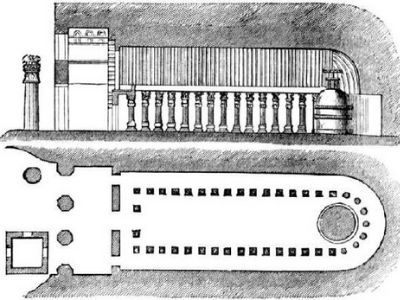
The Bhaja Chaitya Griha is the most distinguished chaitya that is said to be one of the first ancient chaityas that are still in preserved condition as per the Archeological Survey of India and the biggest of all the Bhaja caves.This chaitya griha has a rectangular hall of 18 meters long, 8.50 meters wide, and 6.5 meters in height with an arched horseshoe shaped ceiling that is supported by the Burmese teak wood rib beams. The arched gateway has a horseshoe shaped chaitya window carved above it while a number of small chaitya windows sit on the fencing motifs on both sides.
On the inside there are 27 octagonal pillars that are without a capital in a somewhat leaning position mimicking the wooden pillars that were used to bear the load of the ceiling in the ancient times due to its inclination. But here they are carved as decorative artifacts after the realisation in the later period that upright pillars can also do the same.
The walls of the chaitya griha have the classic Mauryan glossy finish with in all 8 inscriptions that bear the name of some donors and reliefs that express Indian mythological tales along with Buddha images. It is here in the inscriptions that we find mention of the existence of these caves to be of 2200 years old.
The main stone carved stupa in the centre has a hermika i.e. fence like structure on the top with a hole on top to hold a wooden umbrella. From the outside one can notice that the whole verandah structure resembles a high rise building with verandas and windows with notable reliefs.
The 14 stupas
There are in all 14 stupas out of which 9 stupas are carved out of the smaller cave while 5 stand inside. Built in memory of worshipped monks some bear their name inscriptions with their specific titles holding the remains of the monks that stayed in the viharas till their death. They form a magnificent space structure one can roam in between to admire their beauty.
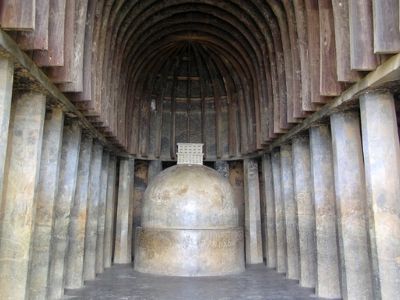
Sculptures
Deemed to have been painted in vibrant colours before enclosing in plaster, the sculptures here present excellent art pieces like that of the famous ‘ dancing couple ‘ in the last cave that is at the south. Interestingly the symbolic representation or important life incidents of Buddha are found throughout in the form of images of lotus, elephant or throne. However after 4 th century AD the paintings of Buddha became part of the caves.Demons driven over by chariots of royal women on wooden relief can be seen on the verandahs. Carving of a woman playing tabla with another one dancing discards the previous assumption that the musical instrument is of a foreign origin.
One astonishing fact is that the Bhaja caves have shady insides but the windows here are carved in such a unique way that the everyday setting sun rays enter the cave to illuminate the god and goddesses stature. Such and many other works of significant archeological structures are present here and so it can be definitely said that the uphill climb of 180 to 230 steps to reach the Bhaja caves has the potential to please your eyes with the wonderful Buddhist art and architecture of ancient India.
0 notes
Photo



https://www.redbubble.com/shop/ap/51936810?asc=u
#buddha#buddhism#meditation#yoga#namaste#yoga and medition#kundalini#lotus pose#yoga teacher#buddha painting#peaceofmind#mindfulness#yogaeverywhere#awareness#consciousness#goodvibes#harmony#spirituality#serenity#buddha art#meditation painting#unity#fine art#impressionism#waterfalls#oil painting#digital art#thirdeye#gypsysoul#celestinevibes
0 notes
Text
Buddha Store - Why you actually want a Buddha statue or image
1. Understand
It can help you to decide on the correct one among the hundreds of different kinds of Buddha statues. More than listening to anyone else or any other belief you should listen to your soul. The basic reason to buy a Buddha statue is to help yourself achieve your inner peace. Worshiping Buddha statues will help us remember, understand and exercise the Buddha 's lessons. Ultimately by breaking out of perpetual cycle of existence following dying, the state regarding Nirvana can easily end up being attained by means of practicing Buddhism with the help of Vipassana relaxation. Find expert advice about buddha-themed store read here.

This will depend upon your range of taking the path to attaining what you need. If you wish to experience a great life, then a happy Buddha or even laughing Buddha could become the appropriate statue to buy. In the event that you would like to tame your own thoughts along with meditating methods, you may need to buy a meditating Buddha figurines. In the event that you merely want to appreciate and wish to love the artwork they can serve as the right ambience for your living area.
2. Learn to separate Buddhist statues from other religious sculptures.
Hindu Deities seem related to Buddhist statues nonetheless you can find massive variations in their particulars. There are several solutions to identify Buddhist statues. One of the methods is actually for you to look at body positions as well as the hand actions. Relaxing hands on the lap means meditation-Buddha 's right hand touching the world symbolizes the enlightened Shakyamuni Buddha.
3. Wherever you buy your Buddha statue always be very careful.
You have to be very careful when you buy statues of Buddha. Just before you contemplate obtaining it, you need to find out where the actual Buddha sculpture was originally made. To make the authentic statue certain one must avoid poor copies of replicas. The genuine artists who help make sculptures of this type are originally from Nepal. The specific art surrounding the creation of the sculptures is exported from Nepal to Tibet, where this has earned substantial attention.
4. Judgment regarding quality by observing the facial art.
Face is the single most crucial element in searching for a Buddha while acquiring it. The better the Buddha 's actual face painting the better the actual quality of that particular sculpture. If you choose to buy gold Buddha, expert artist will decorate the face mainly with 24 karat gold. Nostrils should be present on top of that great outline of eyes. The general face should really reflect empathy, looking at what should be producing effortless respect for the Buddha within us.
5. Remember to always look to the ears.
Always check the long ears that mean the true beauty behind the work of the artists. Real Statues of Buddha should have long ears.
6. Look into the designs on Buddha 's body
Designs and carvings on the entire body that include the Buddha 's price speak amounts of the figurine. High quality Buddha statues have excellent designs which are the specialist craftsmen 's fine work of art.
7. Different types of Buddha figurines
You should select exactly what sort of statute suits you. Like Gold Buddha, Oxidized Buddha, Antique Buddha, Wood Buddha, Jade Buddha, Copper Buddha, Bronze Buddha etc.
8. Fill the Mantras with Buddha Sculptures (Sacred Chants)
Without mantras within, Buddhists can look at an unfilled figurine in your own home, reducing your long existence, peace, well-being and money. While filling it with mantras, luck, tranquility, affluence and joy bless you. Sculptures specifically created in China or Asia tend not to be created to fill mantras inside where they are developed as figurines made in Nepal, especially with regard to mantras to be placed inside. You can even ask the seller if the statue could be blessed by a Monk in the nearby Buddhist Monastery before you buy.
0 notes
Text
18 Easy Ways To Facilitate Buddha Canvas Painting | Buddha Canvas Painting
Sonakshi Sinha has appear that she loves to draw faces. The extra on Monday aggregate a video area she can be apparent authoritative a painting of Buddha’s face. Her painting blue-ed “The Enlightened One” has been put up on bargain to accession funds for the circadian allowance earners.
Sharing the video on Instagram on Monday morning, Sonakshi wrote: “I adulation cartoon faces, so absitively to draw the best peaceful one – “The Enlightened One” is up for bargain to accession funds for the circadian allowance earners… if you’d like to accomplish it your own, do bid for it on https://bit.ly/FankindAuction (link in BIO as well) @fankindofficial #artbyaslisona.”
Sonakshi has absitively to bargain her artworks to accession a armamentarium which will advice her accommodate allowance kits to circadian allowance workers. The artworks accommodate agenda prints, sketches and ample canvas paintings fabricated by the extra over the years.
The extra afresh aggregate a video on amusing media area she can be apparent sitting central a allowance abounding of her creations, sipping a cup of coffee and staring at them.
“Creating art brings a faculty of calm and abatement to me. And abatement is what I appetite to accompany to those for whom this lockdown has been a nightmare. Bodies who accept no ets and accordingly no aliment to augment themselves or their families, the circadian allowance earners. With the advice of Fankind, I accept absitively to bargain a mix of canvases and duke sketches that I accept created with all my heart. The gain from the bargain will be donated to GiveIndia, to
18 Easy Ways To Facilitate Buddha Canvas Painting | Buddha Canvas Painting – buddha canvas painting | Encouraged to help my website, in this period I will explain to you about keyword. Now, here is the very first picture:
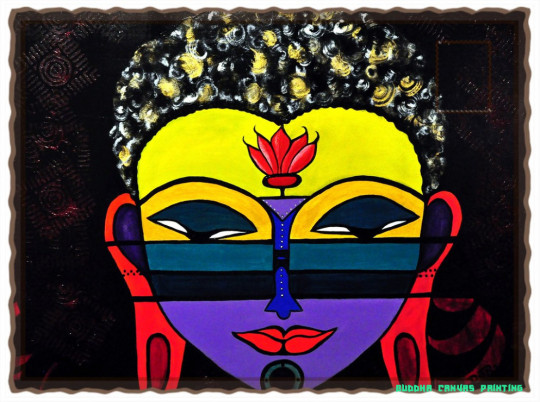
Little tribal in all of us – buddha canvas painting | buddha canvas painting
Why not consider image previously mentioned? can be that will wonderful???. if you believe therefore, I’l m demonstrate many impression once again below:
So, if you would like get all these outstanding shots regarding (18 Easy Ways To Facilitate Buddha Canvas Painting | Buddha Canvas Painting), click save link to store the graphics for your computer. There’re ready for download, if you like and wish to take it, simply click save badge in the post, and it’ll be immediately saved in your desktop computer.} As a final point if you wish to find unique and latest graphic related with (18 Easy Ways To Facilitate Buddha Canvas Painting | Buddha Canvas Painting), please follow us on google plus or save this blog, we attempt our best to give you daily up-date with fresh and new photos. We do hope you like staying here. For many updates and latest information about (18 Easy Ways To Facilitate Buddha Canvas Painting | Buddha Canvas Painting) photos, please kindly follow us on twitter, path, Instagram and google plus, or you mark this page on book mark area, We attempt to offer you up-date regularly with fresh and new pics, like your exploring, and find the best for you.
Here you are at our site, articleabove (18 Easy Ways To Facilitate Buddha Canvas Painting | Buddha Canvas Painting) published . At this time we’re excited to announce that we have found an extremelyinteresting contentto be discussed, that is (18 Easy Ways To Facilitate Buddha Canvas Painting | Buddha Canvas Painting) Many people looking for details about(18 Easy Ways To Facilitate Buddha Canvas Painting | Buddha Canvas Painting) and certainly one of these is you, is not it?
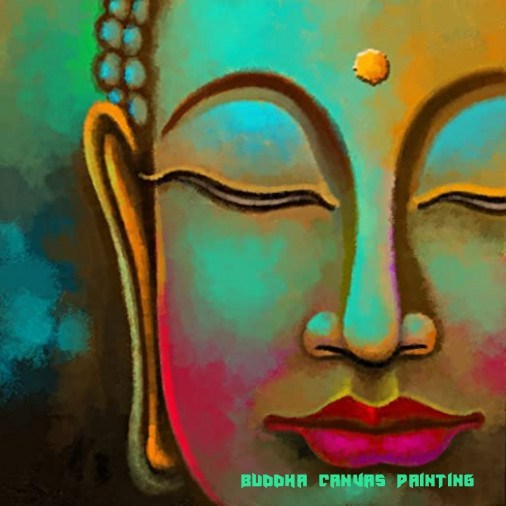
Amazon.com: Art Factory Buddha Canvas Painting Feng Shui 18″(W)x18 .. | buddha canvas painting
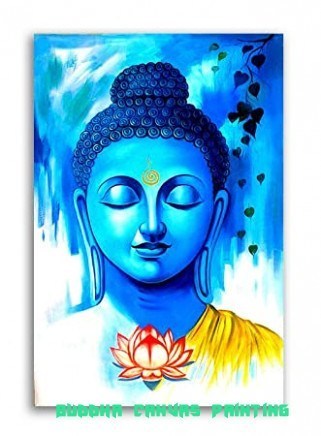
Tamatina Buddha Canvas Paintings – Blue Buddha – Buddhism Paintings – Buddha Paintings for Home Décor – Paintings for Bedroom – Paintings for Living .. | buddha canvas painting
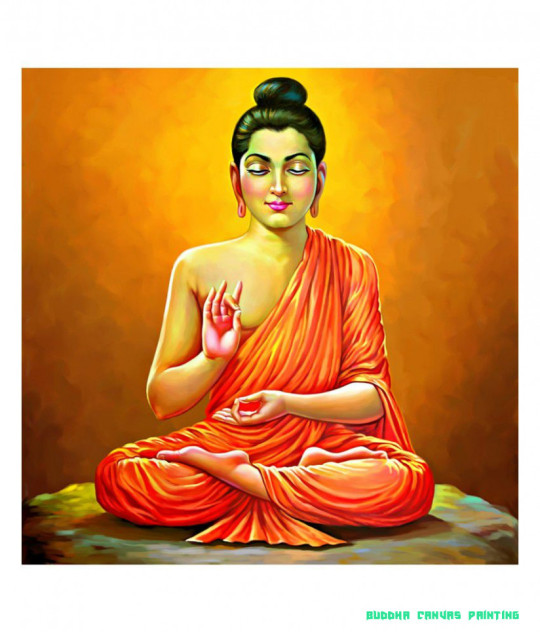
Art Factory Buddha Canvas Painting: Buy Art Factory Buddha .. | buddha canvas painting
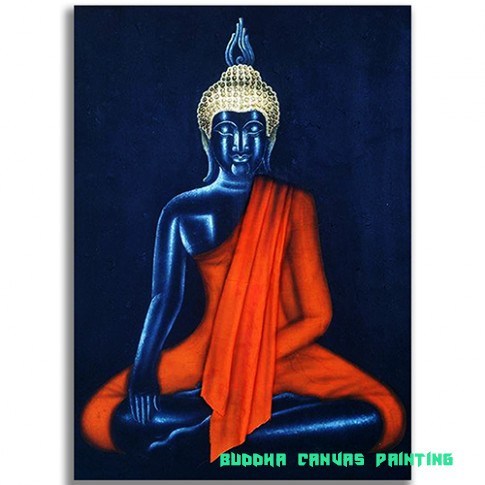
Meditating Buddha Canvas Painting – buddha canvas painting | buddha canvas painting
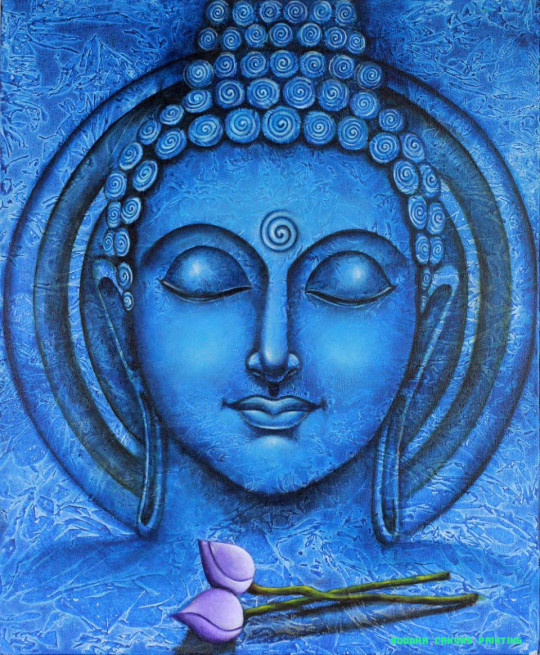
Buddha paintings canvas Online | buddha paintings acrylic – buddha canvas painting | buddha canvas painting
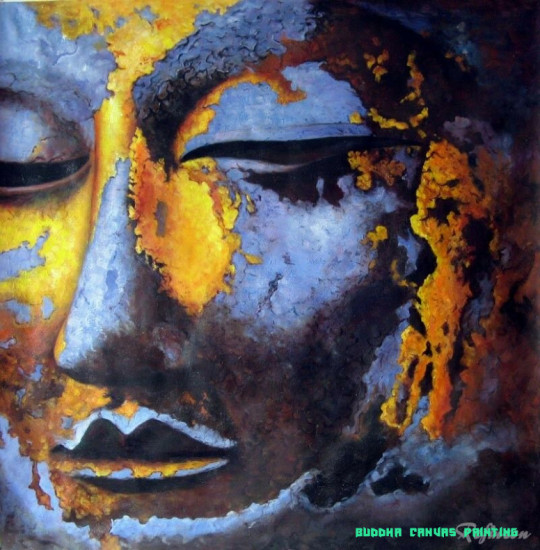
Handmade Buddha Oil Painting on Canvas Caturiddhipada | eBay – buddha canvas painting | buddha canvas painting

Distant View of a Village by artist M Singh | Abstract Art .. | buddha canvas painting

WebMuseum: Redon, Odilon – buddha canvas painting | buddha canvas painting

Abstract Buddha Canvas Print Wall Art 18 – buddha canvas painting | buddha canvas painting

Buddha Multicolor Canvas Poster | Buddha wall art, Buddha canvas .. | buddha canvas painting
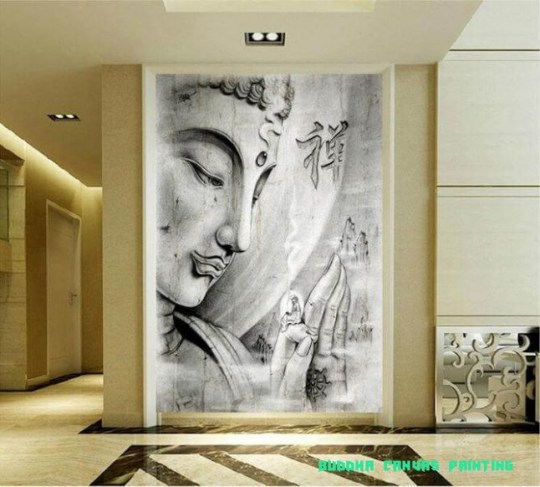
Large Buddha Canvas Painting | Yoga Mandala Shop – buddha canvas painting | buddha canvas painting
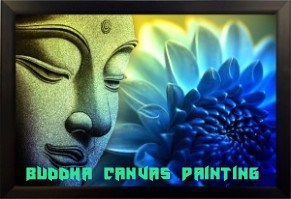
DivineCrafts Fine Print Meditating Buddha Canvas Painting18 inch x 18 inch – buddha canvas painting | buddha canvas painting
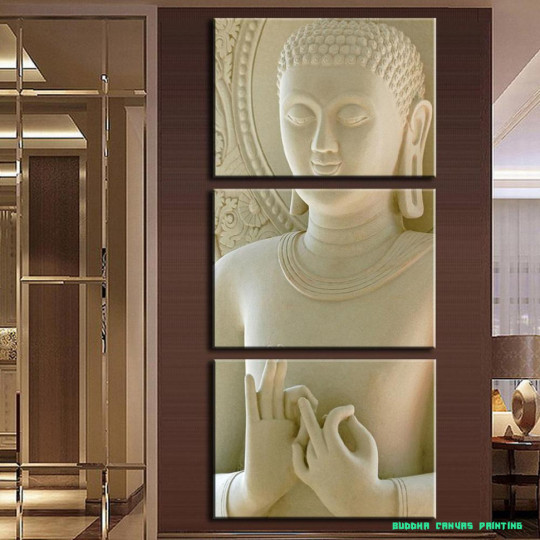
2017 Modern Buddha Painting 3 Picture Home Decoration .. | buddha canvas painting
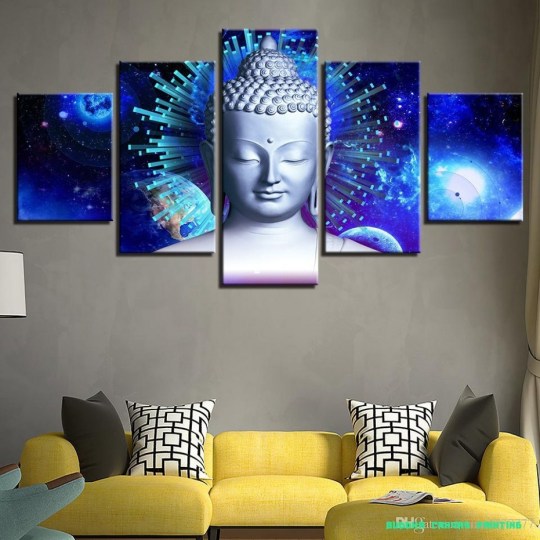
18 New Blue Buddha Canvas Painting 18 Panel No Frame Buddhism Poster Buddha Statue Picture For Temple Home Decor Wall Art Group Painting From .. | buddha canvas painting
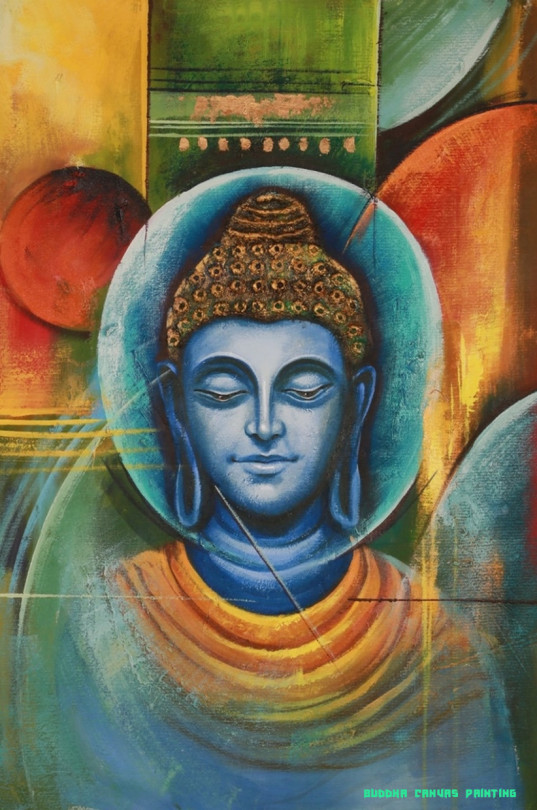
Buy Buddha And Peace 4 by Community Artists Group@ Rs .. | buddha canvas painting
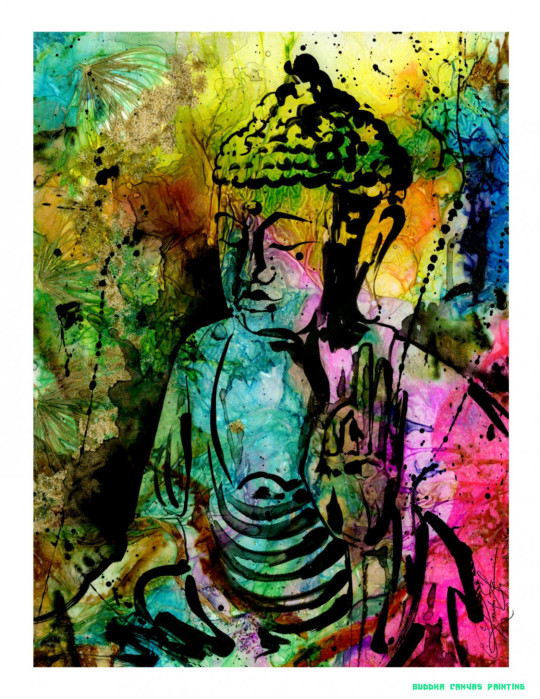
Buddha painting Green Pink Spiritual Zen art archival – buddha canvas painting | buddha canvas painting
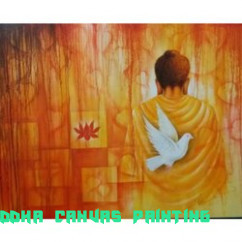
Modern Buddha Canvas Painting – buddha canvas painting | buddha canvas painting
from WordPress https://www.bleumultimedia.com/18-easy-ways-to-facilitate-buddha-canvas-painting-buddha-canvas-painting/
0 notes